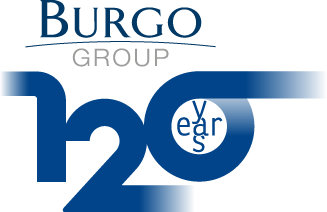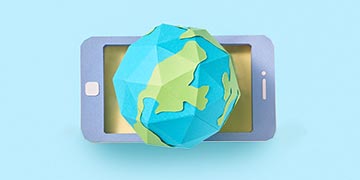Mosaico, a production based on customer needs
The development of Mosaico products is influenced by several factors, as explained by Stefano Carraro in the interview. In addition to a strong connection to customer needs, dictated by technological change and changes in the sector, influence comes from the availability of raw materials, legislation, production lines and plants. In order to design a product it is necessary that all these factors are aligned and verified beforehand and also in the course of work: Carraro interacts with various internal departments in Mosaico at a high level, starting from marketing to production, aligning various objectives and agreeing on specifications with customers. The relationship with the latter is central in the development of special papers, since they are the main driver of the market and determine the production directions while contributing to the shift of the company towards a circular economy with a growing focus on sustainability.
What are the main activities in your area of expertise?
The tasks that I typically carry out in Mosaico are manifold and interface with almost all the processes of the brand. The activity usually starts with direct consultation with the Marketing department, which is very keen on the market demands and gives us the first inputs. We then move on to a close working relationship with the sales area. The sales area usually receives the first inputs from the existing customers, or even from new customers, thus providing the foremost filter to give us the first information in Research and Development. It is then up to us to understand what to do or not to do, and what to base our work on. There is also a financial check, which we do with the accounting department. This is in terms of feasibility, i.e. will the product deliver a marginal profit? How much will cost to produce the product?
Afterward, there is a technical production check. Do we have the right plants to produce what we want to produce? Are there any changes required? Do we have the knowledge and skills to make a certain type of special paper? If these last two elements, financial and technical, have a positive response, we can start with a test production, usually tested by a small group of customers. We are talking about truly special products. The customers give us feedback and more often than not adjustments are needed. Then, at this stage, quality control takes over and, last but not least, the after-sales assistance, which is required at least for the first months of the product's life.
This, roughly speaking, sums up my role as a product development manager, which can be regarded as a product manager.
What are the development drivers for Mosaico in the short, medium, and long term?
The development drivers for Mosaico in the short, medium, and long term can be summarized as follows:
-
In the short term, we must consider the availability of raw materials. In a difficult moment, with a situation of international tension, some raw materials can be in short supply or must be replaced with others, while other players in our industry can appear or even disappear. This means that some companies open the possibility of producing new products in a short time, and other companies enter our market, all factors that force us to revise our strategies and tactics.
-
In the medium term, we may also be influenced by international and national legislation, where directives and guidelines can require us to modify our product in one direction or another. Even the need to adapt our products to production lines might arise, because maybe they require a more performing and faster machine and consequently our products, the raw materials, must be able to adapt to these needs.
- In the long run, however, our work is influenced by the intent of Mosaico to develop completely new products. It is a job that takes years because we think in the long term of two, three, four, or five years. Here we are talking about creating something new and which very often also requires structural plant modifications and thus important investments by Mosaico.
How is Mosaico adapting to the transition from a linear to a circular economy?
Mosaico is extremely sensitive to the new environmental sensibilities that are strongly growing among the consumer base. A lot of work is being done to move from a linear economy, in which the goal is to produce, consume, and discard, to an economy where the product is produced, used, and at the end of its life, through special recycling processes, transformed into the raw material for a new product. Paper is a plant product, a natural product that lends itself well to this logic of circularity.
The cellulose fibre can be used at least up to seven or eight times. The resources of nature are not infinite: disposal facilities are limited and sometimes have very low efficiency. We have also realized that developed countries use more raw materials than they have, so we must do everything possible to safeguard the raw materials and natural resources that the Earth gives us.
What are the characteristics of a production that is less centered on the product itself and more focused on customer needs?
Burgo comes from a traditional approach, strongly production-oriented: this essentially means that a company sells what it can produce of a certain quality. In the specialty papers sector in which Mosaico operates this is not possible: in this case, the customers or the market give the inputs.
So, producing and selling a product with a certain level of quality is no longer satisfactory. Instead, it is vital to go and discuss directly with customers to understand what they actually require. This means understanding the customer's needs but also being able to make a difference by satisfying those needs that have so far been left unsatisfied, while being able to offer a product that also matches the existing processing plants.
This is the extra step that a market-oriented company must be capable to take, knowing how to grasp the needs of the customers and how to propose an adequate and at the same time competitive offer, compared to what the market is currently delivering.
What is the most important challenge for Mosaico in the years to come?
The biggest challenge for Mosaico, among other important ones, is to keep on growing side by side with its customers. A continuous motion, a work of confrontation, discussion, sometimes even distancing, and then subsequent rapprochements that come from the common will to achieve success.


